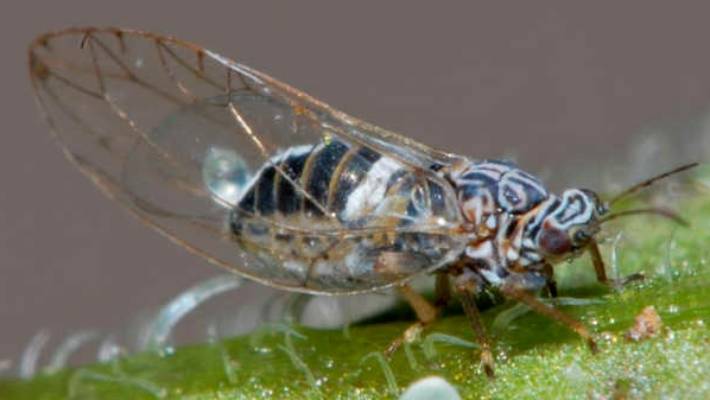This week the University of Idaho and the Idaho Potato Commission had traps deployed in 83 of the 83 fields monitored this year and found a total of 107 psyllids across 32 (35.9 percent) of the 83 monitored fields.
Psyllids were collected on sticky traps in potato in the following counties: Payette (three fields), Canyon (11 fields), Owyhee (two fields), Elmore (four fields), Twin Falls (nine fields), Jerome (two fields), and Cassia (one field).
From last week’s samples, one psyllid tested positive for Lso (liberibacter), the bacterium associated with zebra chip disease. This hot psyllid was collected from one field in Twin Falls County.
Given the recent incidence of Lso observed in psyllids, UI experts strongly urge growers and crop consultants to maintain their IPM programs.
The uptick in psyllid abundance this week is not surprising given that we historically have seen an increase in captures during late July through August. Abundance of psyllids so far has been higher this year than during the last two, but still not as high as during 2016 when hundreds of psyllids were captured each week during this time.
“Heat maps” of this week’s results are included on the UI and Washington State University websites (see links below). “Heat maps” describe predicted psyllid densities across the landscape, based on our trap counts and on predictive models developed over six years of psyllid monitoring in Idaho. These maps, developed in collaboration with WSU, should be used as a guideline, but not a definitive count of the number of insects in any given field at any given point in time. “Low,” “Moderate,” “High,” and “Very High” designations are arbitrary categories that illustrate relative abundance and should not be used as “thresholds.”
More information can be found at http://www.uidaho.edu/cals/potatoes/news
- Click on the links under “Updated weekly reports” for details on trap captures.
- Click on the “Psyllid Management” link on the left panel for information on psyllid and zebra chip biology and management.
- WSU site: https://potatoes.decisionaid.systems/idaho
